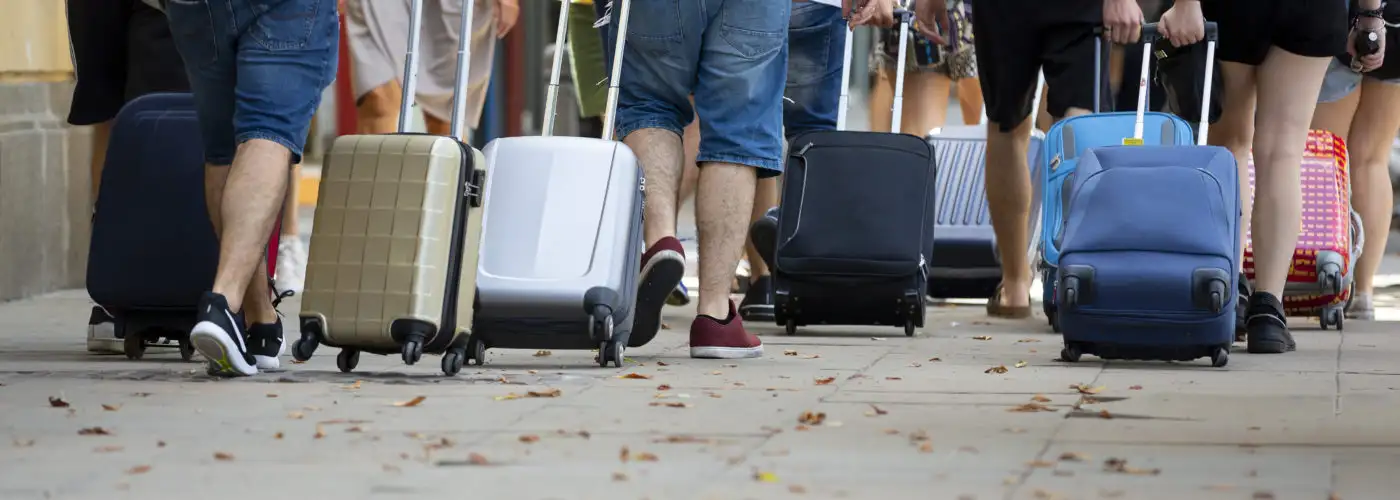You’re standing in the airport terminal, watching a line of luggage move toward you on the conveyor belt. You eye each bag carefully, searching for your own and dreading two distinct and disappointing outcomes: Your bag could either appear dented and mauled with your underwear hanging out of a gaping tear, or, like a blind date gone horribly wrong, it could simply fail to show.
Choosing the right luggage can help prevent these minor tragedies, in addition to other inconveniences like pesky baggage fees for an oversized piece or the embarrassment of trying to squeeze your massive nylon duffel into the overhead compartment as impatient passengers struggle to get by. Pick the right hand luggage and experience the freedom of traveling with only a carry-on—you won’t have to worry about lost luggage or extra fees if you can pack what you need in a good-sized carry-on. If you do check a bag, you’ll feel confident that it will remain intact if you select a sturdy, reliable brand. Here’s how to choose luggage that’s right for you.
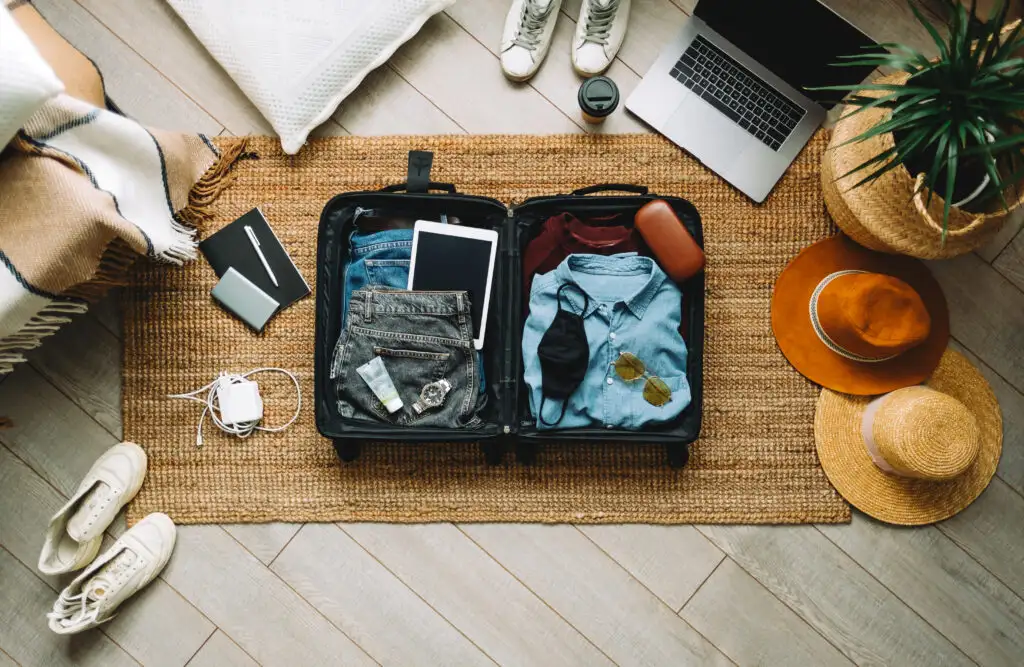
Q. What are the most common types of luggage?
A. Travel luggage comes in a variety of shapes and sizes, from backpacks to rolling suitcases. Below are three of the most common types of suitcases.
Rolling Suitcases
Traditional luggage, which has wheels for easy transport, comes in two models: hardside and softside. Hardside bags are molded from difficult-to-pronounce materials like polypropylene and polycarbonate. Soft bags can be made out of fabrics such as microfiber, leather, nylon, PVC, or polyester. Some soft bags are expandable and can accommodate up to 25 percent more if you need the space. (For more information on the difference between hard and soft luggage, see below.)
Backpacks
Backpacks come in a variety of sizes, both with and without frames. They are a good option for anyone planning to camp, hike, or do other outdoor activities. Some backpacks include wheels, while others do not. Even large luggage pieces can become backpacks when they have padded back straps. These bags can be great—but make sure to tape down any wayward straps if you check your backpack to keep them from getting entangled in the baggage carousel.
Duffel Bags
Duffel bags are no longer just a sack to cart your sweats to and from the gym. Many modern duffels have accessories like wheels and a retractable handle; these bags are often sold as “travel duffels.” While a traditional small or medium duffel bag will fit nicely in the overhead compartment, it may strain your arm or shoulder if you have to carry it for long distances. For extensive travel, always go for a piece that has wheels or back straps.
Q. Hard vs. soft luggage: Which should I choose?
A. Many travelers have a strong preference when it comes to hardside vs. softside luggage, but either one can work well depending on your personal travel and packing style. Below are some of the pros and cons of each type.
Softside Luggage
If you want flexibility, softside luggage is the way to go. Soft bags are more common than hard-shell luggage, especially for carry-on luggage, and are easier to squeeze into tight overhead compartments. These bags may also absorb shock better than their molded counterparts.
These bags are lightweight—generally lighter than hardside bags—which makes them easier to sling into overhead bins and the like. Be discriminating about fabrics, though. Look for a bag made from ballistic nylon (or another durable nylon), which provides the best protection against wear and tear. And make sure the fabric is waterproof and stain-proof.
Soft bags are available in a wide variety of models; for example, you can purchase a carry-on with a zippered backpack attachment, or a duffel that can be either strapped to your back or wheeled through the airport.
If you like having exterior pockets to store items such as a book or your clear plastic bag of liquids and gels, you’re much more likely to find them on a softside bag. Soft suitcases also tend to have a single large interior compartment, with the front of the bag acting as a sort of “lid,” while most hardside suitcases are designed in a clamshell style, with two equal halves that fold together.
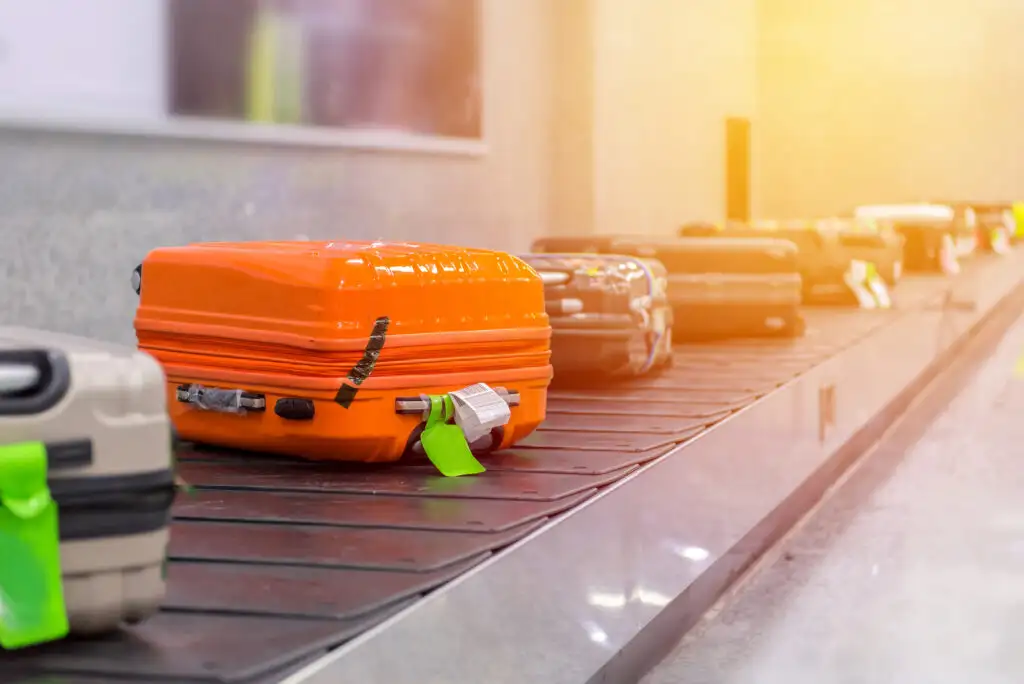
Hardside Luggage
It seems like hard-shell suitcases are being upgraded and improved upon almost daily. Companies are now using ultra-lightweight materials, such as polycarbonate and special plastics, to make hardside bags that are featherweight but also extremely durable and strong.
Hardside suitcases tend to protect fragile items better than soft bags, which makes them increasingly popular for bags large enough to check. But because they’re stiff, they might not be able to squeeze into that last bit of space in the overhead bin—and when packing, you might not be able to cram in that one last outfit.
Hardside bags are easier to clean than soft suitcases, though they are also prone to scuffs. Travelers who like to stay organized may prefer the aforementioned clamshell packing design, which forces you to divide your items into two compartments.
Q. Two wheels or four?
A. There are a few things to factor in before making a choice—and note that the quality of the bag can make a difference: Some four-wheeled spinners roll like a dream while others feel difficult to control, and the same goes for two-wheeled bags.
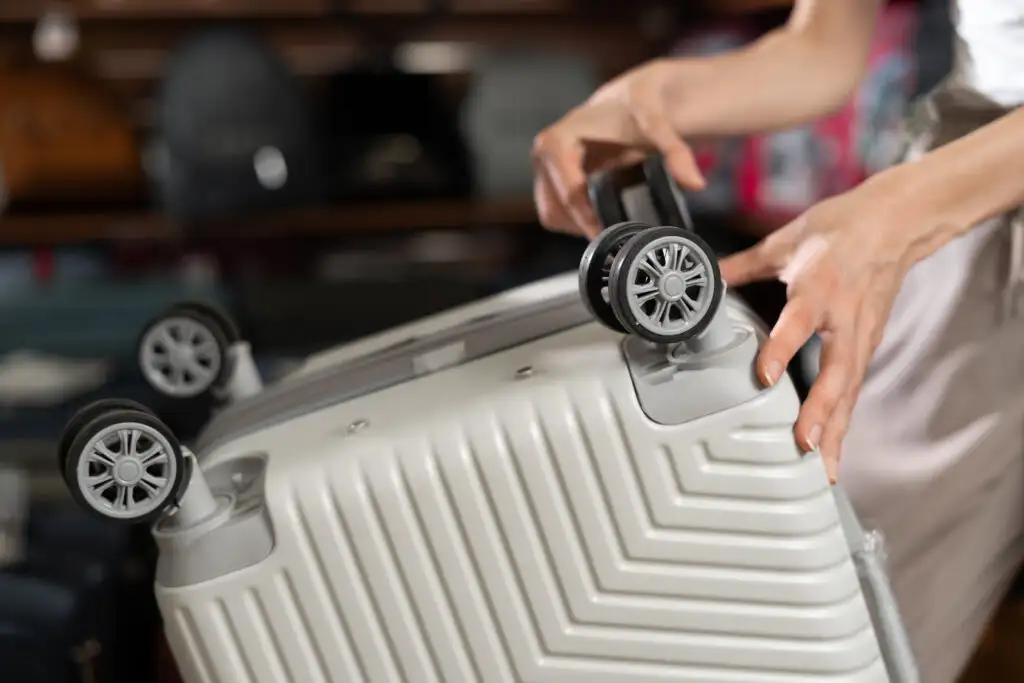
Two-Wheeled Luggage
Two-wheeled luggage, also known as rollaboard luggage, rolls forward and backward on wheels that are recessed into the case; this saves a bit of packing space and also protects the wheels from damage.
The design of two-wheelers generally means they are easier to maneuver on uneven surfaces. The main drawback of this style of bag is that you must drag it behind you. This pulling motion can cause strain to wrists and shoulders. Anyone prone to pain in these areas should go with a four-wheeled spinner instead.
Spinner Suitcases
Four-wheeled bags, or spinners, have wheels that rotate 360 degrees, which means you can turn the bag in any direction. This provides improved mobility and gives you options: You can roll the bag next to you, push it, or pull it. But those protruding wheels take up space in the overhead bin and are more likely to snap off or suffer damage; it’s wise to check the warranty before purchasing this type of bag.
In addition, if you’re considering a carry-on, make sure the dimensions listed are wheel-inclusive. Airlines will include the wheels when they measure your carry-on, so you should, too.
Q. What size luggage do I need?
A. As a general rule, go for a carry-on no larger than 22 x 14 x 9 inches and a checked bag no larger than 62 inches (length plus width plus height), which are the standard for most major airlines in the U.S. Note that many bags marketed as “carry-ons” are a little larger than the above measurements, especially once you count the wheels—which could lead to unpleasant surprises at the airport if you’re forced to gate-check.
Although you may want to bring as large a bag as you can on the plane, remember that if you can’t lift your carry-on bag above your head, you will not be able to place it in the overhead bin.
Check the websites of the airlines you fly most frequently for information on what size bags you can check or bring onboard, and keep in mind that many airlines have different size requirements for international vs. domestic flights. If your new suitcase pushes the limits of the airline’s size restrictions, you’re going to have to deal with the consequences (read: fees). What you want in a suitcase is best summed up by the Goldilocks principle: a bag that is not too big, not too small, but just right (for you).
When flying on a smaller airline in a foreign country, acceptable baggage weight and size requirements can be a crapshoot. You don’t want to discover that you have to leave behind one of your bags or pay extra fees when you attempt to board a 20-seat plane for a domestic flight in Costa Rica. Check baggage requirements for each flight on your itinerary.
In addition to airline requirements, think about your own requirements: your lifestyle, health, and particular needs. Do you have a bad back? You’ll want to look for an ultralight suitcase, like these options all below six pounds.
Q. What’s the best place to buy luggage?
A. You can buy just about anything at Amazon.com, and luggage is no exception, with suitcases available from reputable brands such as Delsey, Eagle Creek, and Travelpro. You’ll also want to check out luggage retailer eBags.com, which carries a full line of luggage, garment bags, briefcases, duffel bags, carry-ons, and more.
You might also want to buy directly from the manufacturer; popular luggage brands to consider include Away, Briggs & Riley, Samsonite, and Tumi.
It’s sometimes better to shop in a real store instead of online, as that will allow you to test the bag before purchasing. Pretty much any department store or big-box store (like Target or Kohl’s) will have a selection of luggage, though quality can vary widely.
Thoroughly read the warranty policy before purchasing a bag. Ideally, you want to buy from a company that provides lifetime warranties on its luggage. Companies with some of the most comprehensive warranties out there include Victorinox, Briggs & Riley, and Eagle Creek.
Before you decide to keep a new bag, test, test, test. Walk around for a bit and see if the handle is long enough for you, if you like the feel of the fabric, if the back straps are comfortable, and if the suitcase feels sturdy and durable. If you shop for a bag online, order it at least a month before your trip so you can send it back if it doesn’t feel right for you.
Q. How much should I pay for a suitcase?
A. Consider investing a little more to get the most out of your suitcase, especially if you travel frequently. The cost of replacing a cheap bag every couple of years will add up eventually, so spend a little more up front to get a suitcase that will be with you for the long haul.
Whether you opt for a hardside suitcase or a soft one, be discerning about materials and construction. Think of your suitcase as your forever friend. You want this relationship to last a lifetime, right?
That said, designer luggage is a more a fashion symbol than a travel tool and is not the choice of most experienced travelers. A $1,000 piece of luggage isn’t likely to be that much more useful than a good-quality $200 or $300 bag.
Q. What’s the best color for luggage?
A. Luggage is available in just about every conceivable color and pattern, from metallic solids to leopard prints. Classic black generally shows the least amount of wear and tear, but it’s also the most common luggage color—as evidenced by the never-ending sea of black bags shuffling by on the luggage carousel after just about every flight. Choosing a brighter color for your checked bag will make it much easier to spot.
If you do opt for black, tie some colored ribbon or a scarf to the handle or strap on a bright luggage belt.
Q. Which extra features should I consider?
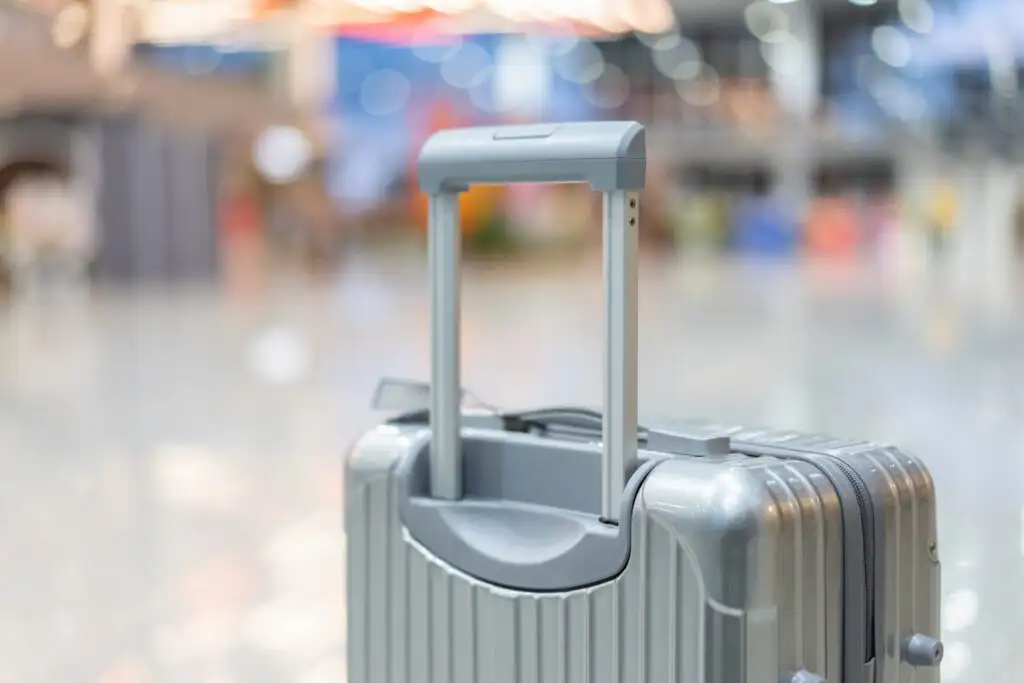
A. Compare different luggage interiors and exteriors to see what suits your style. Lots of compartments and pockets are great for the super-organized packer, and features like a plastic waterproof pouch can hold wet swimsuits or leaky shampoo bottles. Think about where and how you travel and what you tend to pack when considering these suitcase features.
Handles
Look for a sturdy handle that feels comfortable and is ergonomically designed. A handle system that is built into the inside of the bag is best because the handle is protected from damage. Test out the handle: Extend it to its full length, make sure it locks (and stays locked), and take the bag for a spin. If the suitcase is jabbing you in the backs of the legs, that means the handle isn’t long enough for your height.
Bags with a detachable piggyback clip, a looped clip on the top of the bag near the handle, allow you to clip a second bag onto a larger one. When you pick up your checked bag, clip on your carry-on or personal item, and presto—you have a free hand.
Zippers
The bigger and sturdier the zipper, the longer it will last and the better it will stand up to the abuses of travel. Go for metal over plastic, and look for self-repairing zippers—so called because in the event of a snag in the zipper’s teeth, pulling the zipper back down and over the snag fixes the problem and reseals the teeth.
TSA-Approved Locks
If you want extra security, choose a bag that includes a TSA-approved lock. While you can also purchase a lock separately, many travelers find it more convenient if the lock is built into the suitcase.
Pockets and Organizational Systems
When it comes to pockets, softside bags generally win. (The construction of hardside suitcases doesn’t allow for many extra pockets and outer compartments.) If you love organization—a place for everything and everything in its place—there are lots of bags on the market for you. One great example is GeniusPack’s innovative Supercharged carry-on, which features everything from a hidden laundry bag to “genius pack” compartments for every imaginable clothing category.
USB Charging Ports
Many newer carry-on models include built-in USB charging ports so you can power up your phone on the go.
Three words: lightweight, durable, and multi-functional. The Carry-On from Away makes traveling that much easier, especially with its removable, TSA-approved battery for your electronics.
Editor’s note: This story was originally published in 2017. It has been updated to reflect the most current information. Julianne Lowell, Margaret Leahy, and Sarah Schlichter contributed to this story.
All of the products featured in this story were hand-selected by our travel editors. Some of the links featured in this story are affiliate links, and SmarterTravel may collect a commission (at no cost to you) if you shop through them.
You Might Also Like:
• Ridiculously Comfortable Travel Clothing and Shoes That Don’t Sacrifice Style• What to Pack for the Caribbean: 35 Essentials
• The 10 Best Weekend Travel Bags for Men
• Luggage Locks: Should I Lock My Suitcase When I Fly?
• 11 Important Things to Do Before Your Next International Trip
We hand-pick everything we recommend and select items through testing and reviews. Some products are sent to us free of charge with no incentive to offer a favorable review. We offer our unbiased opinions and do not accept compensation to review products. All items are in stock and prices are accurate at the time of publication. If you buy something through our links, we may earn a commission.
Related
Top Fares From
Today's Top Travel Deals
Brought to you by ShermansTravel
Greece: 9-Night Vacation, Incl. Meteora &...
Exoticca
 vacation
$2099+
vacation
$2099+
New Year Sale: Luxe, 9-Nt Alaska...
Oceania Cruises
 cruise
$3599+
cruise
$3599+
Ohio: Daily Car Rentals from Cincinnati
85OFF.com
 Car Rental
$19+
Car Rental
$19+
